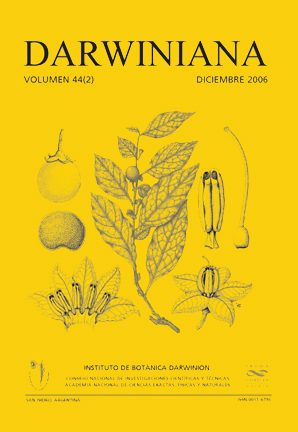CHANGES IN THE PHYTOPLANKTON OF LAKE PLANETARIO AFTER A RESTORATION PROCESS
DOI:
https://doi.org/10.14522/darwiniana.2014.442.106Keywords:
Argentina, Buenos Aires, bloom, Microcystis aeruginosa, restoration, urban recreational lkeAbstract
Lake Planetario is an urban recreational lake that suffered a Microcystis aeruginosa bloom in March 1999. At the same time the birds and fishes that inhabited the lake died, probably affected by microcystin, hepatotoxin that some strains of Miycrocyistis produce. The City of Buenos Aires requested Aguas Argentinas to restore the lake. Restoration tasks included treatment of sediments and pumping of water from a brackish aquifer. For one year, monthly samples were taken with a phytoplankton net, the qualitative and quantitative composition of the phytoplankton were studied, and physicochemical data were collected. The structure and composition of the phytoplankton were studied and revealed that due to the turbulence caused by the pumping of water, the Cyanophyta were controlled and phytoplankton diversity increased significantly. Chlorophyta dominated during spring, Cyanophyta during fall and Bacillariophyta during summer and winter. The change in conductivity provided a favourable environment for new taxa to colonize the lake, with representatives of taxa typical for brackish water.Downloads
Published
31-12-2006
How to Cite
Ehrenhaus, C., & Vigna, M. S. (2006). CHANGES IN THE PHYTOPLANKTON OF LAKE PLANETARIO AFTER A RESTORATION PROCESS. Darwiniana, Nueva Serie, 44(2), 319–328. https://doi.org/10.14522/darwiniana.2014.442.106
Issue
Section
Ecology and Phytogeography
License

Starting on 2012, Darwiniana Nueva Serie uses Licencia Creative Commons Atribución-NoComercial 2.5 Argentina .






